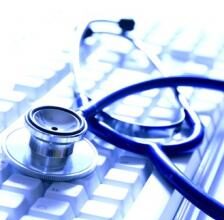Whether you call it the Internet of Everything, the Industrial Internet, or prefer the more common Internet of Things, IoT technology is revolutionizing the healthcare industry. Experts predict that by 2020, the market for this technology will reach $117 billion, and major companies like Apple and Samsung are leading the charge. These technology giants are driving new solutions for healthcare professionals to offer patients the best treatment possible. Previously, doctors could monitor a patient’s symptoms only while he or she was under observation in the hospital, but IoT sensors can track a range of data variables over distance. Once gathered, these data are uploaded to the cloud and made available to physicians at the click of a button. Armed with better data, doctors can be more responsive to patient needs in both diagnostics and treatment. New technologies also make it easier for patients to become active participants in their personal health. Samsung promises to “increase patient engagement” through its tablet devices, which allow doctors to provide visual explanations of diagnoses. Many hospitals around the world use iPads for similar purposes, including accessing up-to-date clinical information during consultations, helping patients navigate the hospital, and acting as diagnostic aids. But the benefits of IoT technology for healthcare do not end there: The technology can also improve efficiency and costs for both hospitals and patients. Driving Healthcare Efficiency If a technician can run diagnostics remotely on a broken machine, then he or she can identify root causes and provide solutions without leaving the office. This approach has led to a 50 percent reduction in average repair times for Varian Medical Systems, ensuring that hospitals are not left struggling when an MRI machine breaks down. The technology can also prevent machines from malfunctioning. An IoT-connected device can alert lab technicians when chemicals and other supplies need replenishing and can create daily use statistics to help administrators efficiently manage machines and help doctors schedule tests. All these applications help healthcare providers cut costs drastically. According to the Kaiser Family Foundation, inpatient day costs in the U.S. can average about $2,000. But remote monitoring procedures means fewer inpatient days, and Goldman Sachs estimates the industry could save upward of $200 billion. It can also tackle one of today’s biggest healthcare problems: the spiraling fees associated with managing drugs. One study estimates it costs about $2.6 billion to develop and bring a new drug to market, and fraudulent drugs have cost programs millions of dollars. With radio-frequency identification technology, however, producers, consumers, and regulators will have greater confidence in this supply chain. Not only will this help stop the market for fraudulent drugs, but it could also lower the price of drug development. And the technology offers a range of other groundbreaking possibilities. A mobile heart monitor that acts as an emergency defibrillator is already in development, and an implantable blood sugar monitor for diabetics began testing in the U.K. in August 2015. The healthcare industry of the future will be unrecognizable, and IoT technology is driving that change. It won’t be long before billions of devices worldwide work as sensors, actuators, microcontrollers, and more. Incorporating the IoT So how can providers ensure they are not left behind by all these developments? 1. Adopt Electronic Health Forms and Mobile Communication Forms People are now used to electronic communication in all walks of life, so this is a good place to start when shifting toward an IoT-driven healthcare offering. Mobile applications allow doctors and patients to communicate quickly and securely, and many of these apps let a patient track his own weight and health, offering clinicians access to a more thorough patient history. 2. Work Collaboratively Administrators and clinicians need to work together for the IoT shift to go smoothly. Implementing a system without proper training and feedback is useless, so any new IoT application needs to be developed collaboratively. If staff members are frustrated, then they might require new training to help make the most of the new opportunities. 3. Introduce Mobile and Tablet Technology on the Ward Much of the information that clinicians grapple with today is far too complicated to be stored on a chart at the foot of a patient’s bed. This often means that doctors are left going back and forth between patient and office to check important details, cutting time spent with patients and causing huge inconveniences. Equipping doctors with tablets would eliminate these journeys and provide ready access to essential information at the tap of a screen. Massachusetts General Hospital in Boston has already adopted this approach, and other hospitals should follow its lead. The healthcare applications of IoT technology will only increase, but the scale of these changes should not daunt providers. It is OK to start with small-scale adoptions that cut costs and improve patient care gradually, rather than to invest heavily in a complete overhaul from day one. Ignoring these new possibilities, however, is no longer an option.





